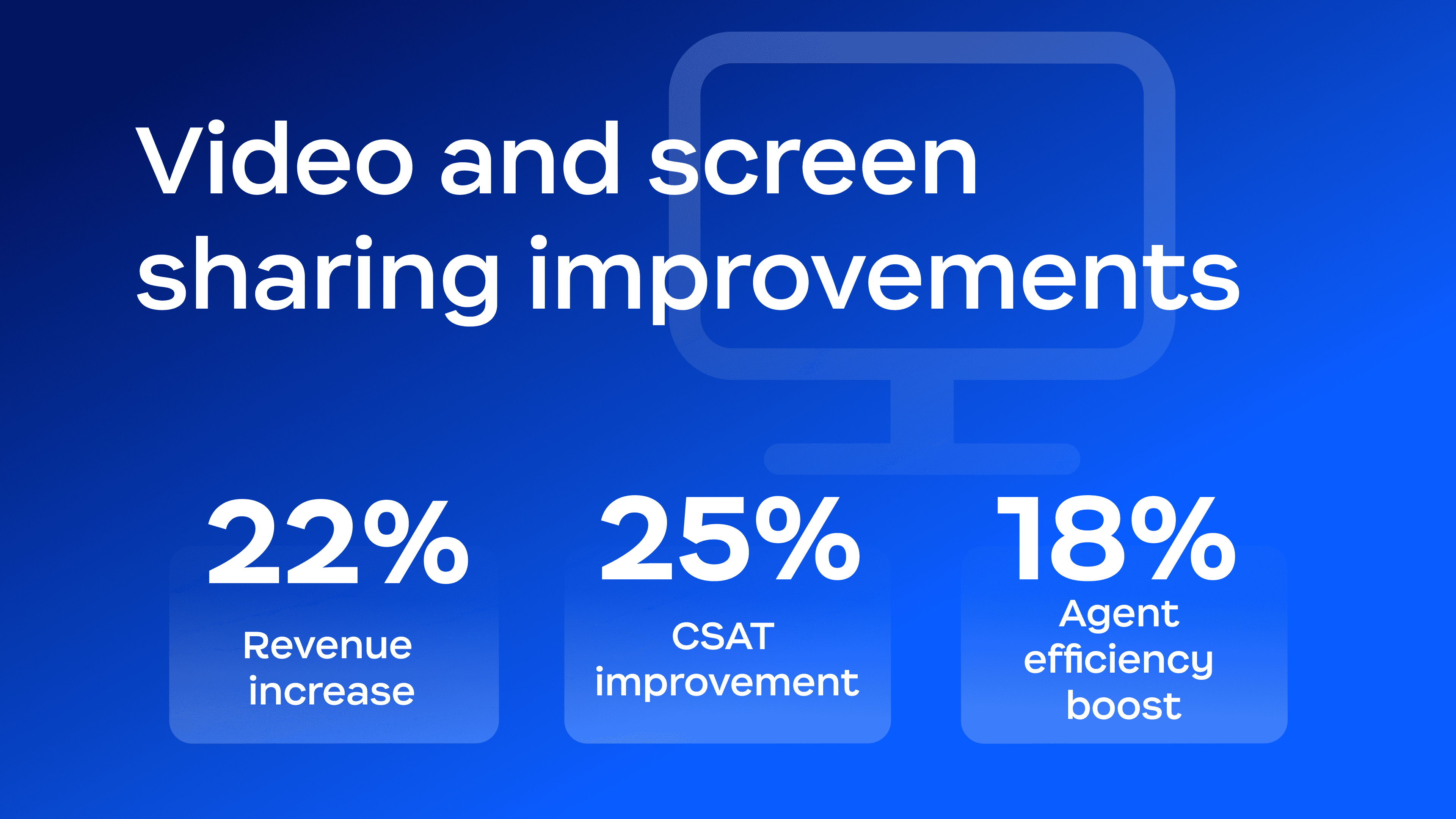
Top 5 contact center trends with industry expert Robin Gareiss
Get ahead in 2024 with top contact center takeaways and industry insights on AI-powered solutions that enhance, not replace, the human touch in CX.
A new study from Metrigy examines customer expectations to find the right balance between the personal touch and AI.
Updated on October 29, 2025
Published on June 17, 2024


Although AI and self-service have advanced at the speed of light in the past year, the support of a real human is still needed in more than 60% of interactions today, according to Metrigy’s AI for Business Success - Consumer Insights 2024–25 research study. This indicates that although AI and self-service are critical in every CX strategy, even more crucial is understanding how AI supports human agents and helps them tackle the most complex issues. But how do contact centers get the balance right in a world where AI has taken over the news cycle and there’s a very real urgency to get ready for the next-generation contact center?
We commissioned Metrigy on their latest report, Use AI to enhance - not eliminate - the human touch, which dives deeper into the topic of AI in supporting a human-led customer experience. By examining key consumer expectations, Robin Gareiss, CEO and principal analyst, finds that incorporating AI into your contact center strategy is vital, but balancing the personal touch and automation is key to success. With 34.8% of consumers believing that customer service got worse in 2023, according to Metrigy’s Customer Experience Optimization 2023–24 Consumer Views, there’s a sense of urgency to address consumers’ needs and growing intolerance for poor service.
Based on the findings in Metrigy’s research studies, CX leaders can find an AI strategy that empowers their agents and pleases their customers by focusing on creating a truly omnichannel experience, enabling efficient self-service, and integrating their unified communications and contact center solutions.
Check out Metrigy’s report for more tips on the right way to implement AI to meet customer expectations.
Consumer needs and expectations are ever-changing and evolving. Today, we want to choose how we interact with companies. Voice is still an important channel, particularly when it comes to issue escalation. However, only some — preferably very few — interactions require an escalation, and consumers want faster ways to interact. For example, 51.2% of consumers prefer using the phone to address problems with products and services, while 49.2% are comfortable with self-service options for ordering products or services. That’s where omnichannel comes in.
What’s the difference between omnichannel and multichannel?
While many companies offer several channels, it is more typical for businesses to take a multichannel approach rather than developing an omnichannel strategy. What’s the difference? With multichannel, multiple channels may be available, but they are not integrated, preventing agents from having the complete picture of a customer’s situation. An omnichannel model brings all channels together to give agents one easily accessible view of the customer’s journey. This opens up the opportunity for the personal touch consumers crave and helps avoid repetition and the inevitable frustration this can cause the customer and agent alike. Today just 43.3% of companies use technology to make their customer journeys more seamless. The opportunity to get ahead with a contact center solution that provides an omnichannel experience is ripe for the taking.
Add video as a channel and boost your CSAT scores
Even though more than 90% of consumers want to use visual channels, such as video and screen sharing, during a variety of interactions with businesses, many companies have yet to leverage the full potential of video. This speaks volumes about the kind of personal, one-on-one experience that consumers are seeking when engaging with certain types of industries.
Metrigy found some compelling reasons why video might just be a channel to add to your omnichannel strategy. Their research shows that revenues increase by 22%, customer ratings improve by 25%, and agent efficiency rises by 18% when visual engagement is used.
Remember that video works best when connected to other contact center features, making it easy for customers and agents to jump to the visual channel (including screen sharing) when needed.

Although CX leaders must look at using AI to leverage all channels, the fastest way to improve customer experience is through better self-service options. While many chatbots and virtual agents are already AI-enabled, there is plenty of potential. The possibilities are endless. The key is to use advancements in AI to ensure your virtual agent sounds “human.” We’ve all been in a scenario with a limited chatbot that brings us around in circles rather than adding value. CX leaders agree. 44% say it’s vital to have bots with a human touch.

Knowledge is power. Having higher-quality knowledge helps a chatbot be more empathetic and successful. Only 30.2% of companies have upgraded their knowledge management system so far. Selecting the right chatbot and equipping it with an up-to-date knowledge management system can go a long way in providing a more human self-service experience for your customers.
Check out Metrigy’s report for more tips on the right way to implement AI to meet customer expectations.
There’s a strong case for integrating your unified communications (UC) with your contact center beyond the ease of management and seamless transfer of information between the contact center and other departments. By selecting one vendor that can bring your employees and agents together on one platform, it’s possible to leverage AI throughout the entire customer journey to power call and meeting summaries, and knowledge management systems. This will not only help your contact center run more efficiently, but with all data living in one place there’s greater potential for creating personalized interactions thanks to deeper and more accurate insights.
Only 23% of companies use a single vendor, even though 47.3% of companies already enable employees outside the contact center to help agents solve customer issues. The power and potential of a combined UC and contact center approach is not to be sniffed at. Metrigy’s research shows that companies that have jumped on the one-solution train are enjoying a 26.5% improvement in customer ratings, an 18% reduction in operational costs, a 22.6% increase in revenue, and a 23.1% boost in employee efficiency.
As businesses navigate the complex landscape of AI and customer experience, it’s clear from Metrigy’s report that success lies in striking the right balance between technological innovation and human interaction. By following their customers’ lead and leveraging AI to enhance—not replace—the human touch, companies can deliver the experiences their customers actually want. Check out the full Metrigy CX AI report to learn:
Hear more helpful insights from Robin Gareiss, Metrigy’s CEO and principal analyst, including her take on the top contact center trends in our recent interview.
At Zoom, we’re helping businesses deliver innovative AI-powered, omnichannel customer experiences on one unified platform with Zoom Contact Center, Zoom Virtual Agent, and Zoom Workforce Engagement.
We’d love to chat with you about your contact center AI strategy. Reach out today and one of our CX experts will happily answer any questions you may have.